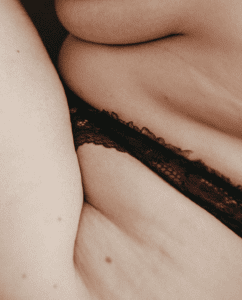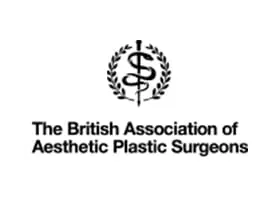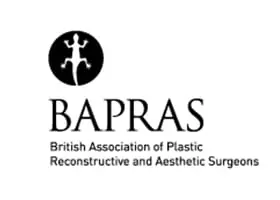Fat grafting, also known as fat transfer, is a cosmetic procedure that involves removing fat from one area of the body and injecting it into another area to improve its shape or volume. The procedure has gained popularity in recent years as a safe and effective way to enhance certain areas of the body while also providing the added benefit of removing unwanted fat from other areas. In this beginner’s guide, we will explain what fat grafting is, how it works, and what to expect from the procedure.
What is Fat Grafting?
Fat grafting is a cosmetic procedure that involves the removal of fat from one area of the body, typically the abdomen, hips, or thighs, through a process called liposuction. The fat is then processed to remove any excess fluid, blood, or damaged cells, leaving only healthy fat cells. The processed fat is then injected into another area of the body that requires enhancement, such as the breasts, buttocks, or face.
How Does Fat Grafting Work?
Fat grafting works by using a patient’s own fat to add volume to areas of the body that may be lacking. The procedure involves several steps:
- Consultation: The first step in any cosmetic procedure is a consultation with a qualified plastic surgeon such as Dr Paul Banwell. During this consultation, the surgeon will discuss the patient’s goals, medical history, and any concerns they may have about the procedure.
- Liposuction: The fat grafting procedure begins with liposuction, which involves the removal of fat from a specific area of the body using a small cannula. The surgeon will make small incisions in the skin and insert the cannula to remove the fat.
- Fat Processing: Once the fat has been removed, it is processed to remove any excess fluid, blood, or
 damaged cells. This is done to ensure that only healthy fat cells are used for the graft.
damaged cells. This is done to ensure that only healthy fat cells are used for the graft. - Fat Injection: Once the fat has been processed, it is injected into the area that requires enhancement. The surgeon will make small incisions in the skin and carefully inject the fat cells into the desired area. The amount of fat injected will depend on the patient’s goals and the amount of fat that was removed during the liposuction process.
- Recovery: After the procedure is complete, patients will be monitored for a short period of time before being released to go home. Recovery time varies depending on the amount of fat that was removed and injected, but most patients can return to work and normal activities within a week.
What are the Benefits of Fat Grafting?
Fat grafting has several benefits that make it a popular choice for patients looking to enhance certain areas of the body. These benefits include:
- Natural Results: Because fat grafting uses a patient’s own fat, the results are natural-looking and long-lasting. Unlike other cosmetic procedures, fat grafting does not involve the use of synthetic materials, reducing the risk of rejection or infection.
- Dual Benefits: Fat grafting provides the dual benefits of enhancing one area of the body while also removing unwanted fat from another area. This can lead to an overall improvement in the patient’s appearance and self-confidence.
- Low Risk: Fat grafting is a minimally invasive procedure with a low risk of complications. Because the procedure uses a patient’s own fat, the risk of rejection or allergic reaction is reduced.
- Long-Lasting Results: The results of fat grafting are long-lasting, with most patients seeing improvement for several years. Because the fat cells are taken from the patient’s own body, the body is less likely to reabsorb the injected fat.
What are the Risks of Fat Grafting?
As with any cosmetic procedure, there are some risks associated with fat grafting. These risks include:
- Infection: As with any surgical procedure, there is a risk of infection with fat grafting. Patients are typically prescribed antibiotics to reduce the risk of infection.
- Overcorrection: There is a risk of overcorrection with fat grafting, which can lead to an unnatural appearance. This can be corrected with additional procedures, but by choosing a qualified and experienced surgeon this risk is extremely minimal.
- Unevenness: There is a risk of unevenness with fat grafting, which can occur if the injected fat cells do not distribute evenly.
- Fat Necrosis: Fat necrosis is a rare complication that occurs when the injected fat cells do not receive enough blood supply and die. This can lead to the formation of lumps or hard areas in the injected area.
- Reabsorption: There is a risk of the body reabsorbing the injected fat cells over time, which can lead to a reduction in the desired effect. However, the long-lasting results of fat grafting make this risk relatively low compared to other cosmetic procedures.
Who is a Good Candidate for Fat Grafting?
Ideal candidates for fat grafting are in good health and have realistic expectations about the procedure. They should have sufficient fat stores in a donor area to allow for effective fat removal and transfer. They should also have specific areas of the body that would benefit from additional volume or contouring, such as the breasts, buttocks, or face.
They should have sufficient fat stores in a donor area to allow for effective fat removal and transfer. They should also have specific areas of the body that would benefit from additional volume or contouring, such as the breasts, buttocks, or face.
It is important to note that fat grafting is not a weight loss procedure and should not be used as a substitute for diet and exercise. It is also important to choose a qualified and experienced surgeon to minimise the risks and maximise the benefits of the procedure.
In conclusion, fat grafting is a safe and effective way to enhance certain areas of the body while also removing unwanted fat from other areas. The procedure uses a patient’s own fat to provide natural-looking and long-lasting results. While there are some risks associated with fat grafting, choosing a qualified and experienced surgeon can minimise these risks and help ensure the best possible outcome. If you are considering fat grafting, it is important to consult with a qualified plastic surgeon to determine if it is the right procedure for you.








































25th June 2025
Bringing Confidence Forward: A Personal Look at Hairline Lowering Surgery
Read More
24th June 2025
Lip Lift Surgery: A Subtle Change That Speaks Volumes
Read More
3rd June 2025
Post-Surgery Compression Garments in Plastic Surgery
Read More